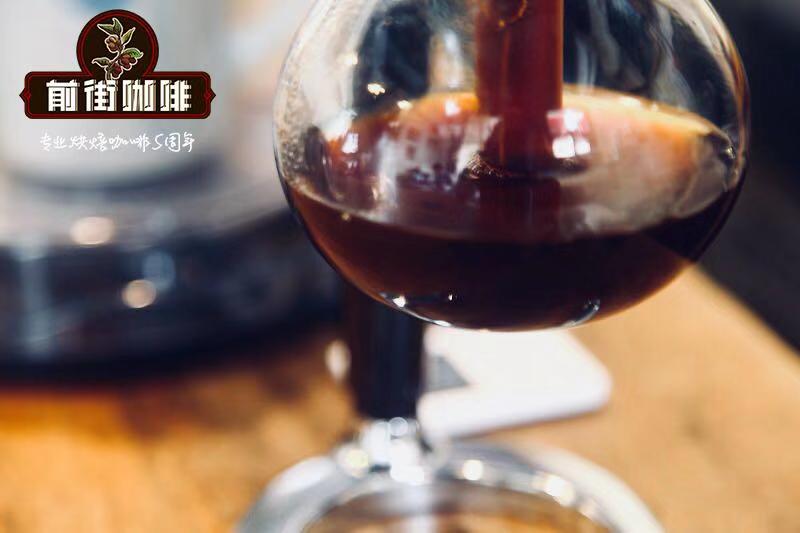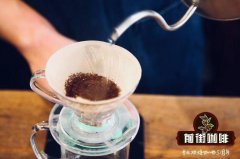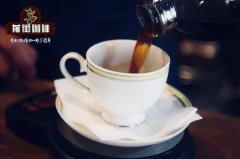What are the differences in the processing methods of three kinds of raw coffee beans | A brief analysis of the processing methods of coffee beans

Professional coffee knowledge exchange more coffee bean information please follow the coffee workshop (Wechat official account cafe_style)
Insolation
This is a relatively old and low-cost method of treatment. The harvested coffee fruit is laid flat on the cement floor or on the sun bed and dried naturally to a moisture content of about 12%. It takes about two to four weeks, depending on the climate of the place of origin. Although the process of solarization is relatively simple, it also has some shortcomings. Because it must be placed in the position of exposure to the sun, so the requirements for the climate environment are more stringent, improper handling, prone to defective beans, worm-eaten beans, rotten, mildew problems, at this time more flavor impurities.
Although the defect rate of sun-cured coffee beans is relatively high, excellent sun-cured coffee beans have a higher sweetness, mellow taste and complex aroma.
Water washing
At present, the more common method of raw bean treatment, many boutique coffee are treated with water washing.
First, select beans
If you soak the harvested coffee fruit in the sink for 24 hours, the ripe fruit will sink, and the unripe or overripe one will float up and can be removed.
Second, remove the pulp.
Use a machine to remove the peel and pulp, leaving only coffee beans wrapped in endocarp. At this time, there is a layer of mucous membrane on the outside of the beans, and the process of washing is to clean the mucous membrane.
3. Fermentation
The mucosal adhesion is very strong and must be placed in the tank for about 18-36 hours to ferment and decompose the mucous membrane.
4. Washing
Put the fermented beans in the washing pool and pass them back and forth, using the force of friction and running water to wash the coffee beans until smooth and clean.
5. Drying
After washing, the coffee beans are still wrapped in the pericarp with a moisture content of 50%. They must be dried to reduce the moisture content to 12%, otherwise they will continue to ferment and become moldy and rotten.
6. Shelling
Peel the dried beans and remove the endocarp and silver film.
VII. Selection and grading
Both sun and water washing methods have a process of selection and classification, which is used to remove defective beans, ensure better quality and sell them all over the world.
The washing method not only retains the original flavor of coffee, but also enhances the brightness, that is, acidity, as well as the special fruit aroma. However, the equipment cost of the washing method is high, and the steps are quite time-consuming, so the production cost is relatively higher.
How can we tell whether a coffee bean is tanned or washed?
In appearance
Sun washing
Under the condition of raw beans, sun beans look yellowish green with more silver skin, while washed beans are blue-green with less silver skin.
In flavor
Sun beans have charming wine and fermented aromas, and the sweetness is obvious; washed beans have bright sour and clean flavor.
END
Important Notice :
前街咖啡 FrontStreet Coffee has moved to new addredd:
FrontStreet Coffee Address: 315,Donghua East Road,GuangZhou
Tel:020 38364473
- Prev

What are the traditional processing methods of coffee beans? what are the characteristics of Starbucks washing treatment of coffee beans in Kenya?
Professional coffee knowledge exchange more coffee bean information Please pay attention to the coffee workshop (Wechat official account cafe_style) Coffee fruit usually has two seeds, the outer layer is covered by endocarp and pectin layer, and the outer layer is pulp and pericarp. The pulp of coffee fruit itself contains a lot of sugar. Treatment is simply a way to remove seeds from the fruit, which are found all over the world.
- Next

What is the coffee with obvious acidity? what is the function of the acid in the coffee?
Professional coffee knowledge exchange more coffee bean information Please follow the source of sour taste in coffee workshop (Wechat official account cafe_style): coffee cherry fruit (coffee cherry) I think many people have no idea that coffee originally looks like this, just like cherries, glossy feel delicious. The seeds in the red pulp are coffee beans after treatment.
Related
- Beginners will see the "Coffee pull flower" guide!
- What is the difference between ice blog purified milk and ordinary milk coffee?
- Why is the Philippines the largest producer of crops in Liberia?
- For coffee extraction, should the fine powder be retained?
- How does extracted espresso fill pressed powder? How much strength does it take to press the powder?
- How to make jasmine cold extract coffee? Is the jasmine + latte good?
- Will this little toy really make the coffee taste better? How does Lily Drip affect coffee extraction?
- Will the action of slapping the filter cup also affect coffee extraction?
- What's the difference between powder-to-water ratio and powder-to-liquid ratio?
- What is the Ethiopian local species? What does it have to do with Heirloom native species?

